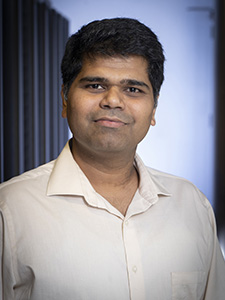Our NSF Cyber Physical Systems (CPS) project proposal is awarded and starts. The project for 3 years is joint between Purdue CS (Aniket Kate), ECE (Saurabh), ABE (Somali Chaterji) and Duke CS (Mike Reiter). It is titled “COPIA: Secure Distributed Protocols for Energy-Constrained Cyber Physical Systems” and is funded for a little over $1M.
 Aniket | Saurabh | Somali |  Mike |
Cyber-physical systems (CPS) have now started to play an increasingly important role in autonomous sensing, analysis, and tasking in a variety of agricultural settings ranging from sustainable farming to livestock monitoring. Many of these settings demand real-time analytics, at varying timescales, and the CPS devices have to coordinate among themselves over a variety of wireless networks. As various actors in these settings—from farmers to big agro companies—have much to gain from manipulating the results of these distributed systems, it is important to make these systems fault-tolerant and secure. This project, COPIA, seeks to provide the fundamental secure distributed computing primitives tailored for real-time agro-analytics in the face of malicious faults and network failures.

Despite more than four decades of work on secure distributed computing, this CPS domain introduces new requirements that COPIA will address through fundamental innovations. First, COPIA will incorporate a principled framework for comparing energy costs of protocols and deriving optimal choices of cryptographic primitives to optimize energy use. This framework will permit leveraging CPS-specific opportunities, e.g., the difficulty for an adversary to equivocate (or offer two conflicting statements to two different neighbors) due to the omnidirectional nature of wireless links. Second, COPIA will achieve consensus in dynamic networks, i.e., where CPS nodes are mobile (e.g., drones). The technical challenge here is that the communication graph of nodes dynamically changes; most existing work assumes graph connectivity is unchanging throughout the execution of the protocol. Third, COPIA will address privacy in these distributed computing protocols, as the farmers are increasingly worried about companies extracting trade secrets from sensor data. This thrust involves hardening distributed computing protocols so that a limited number of node compromises does not divulge secrets.